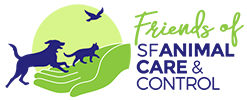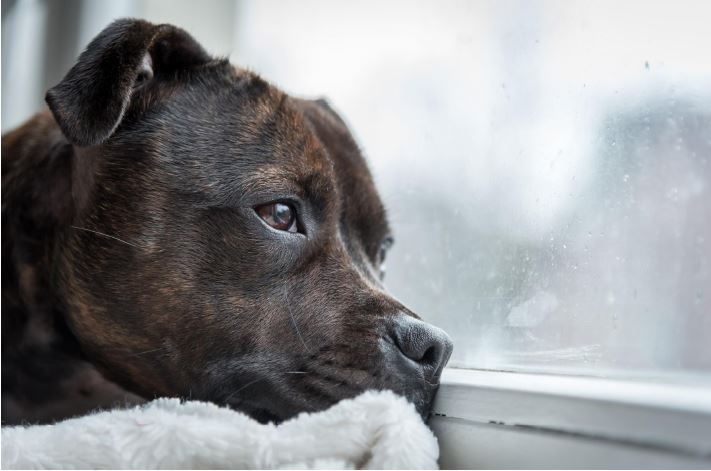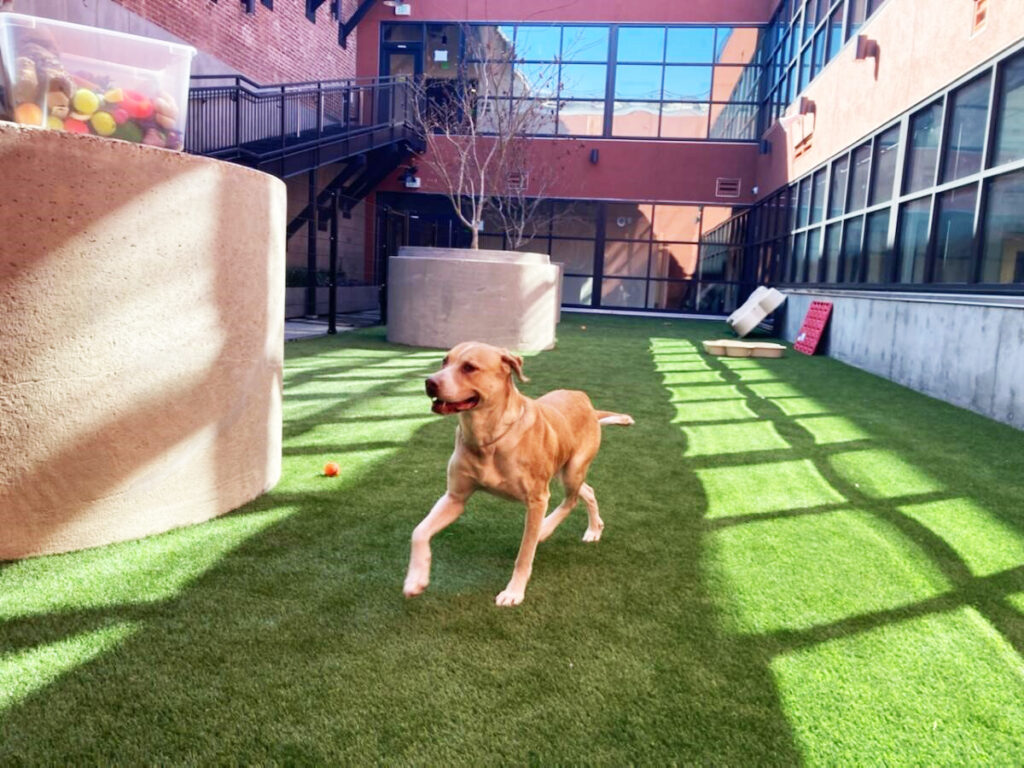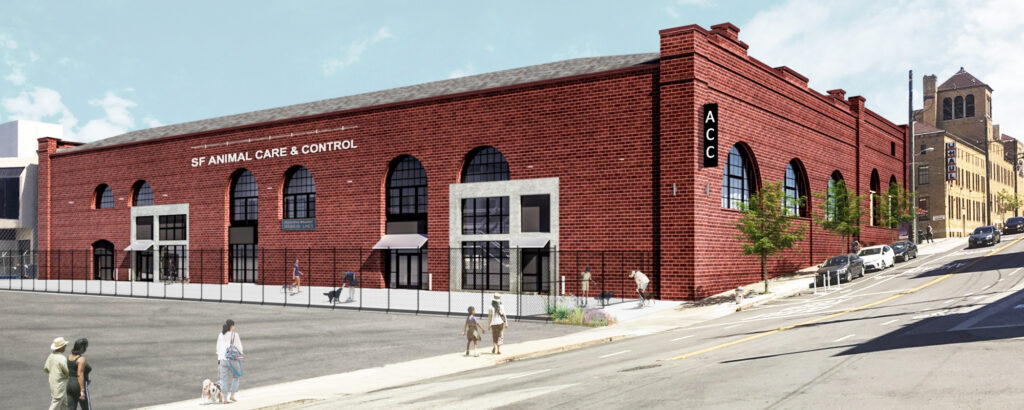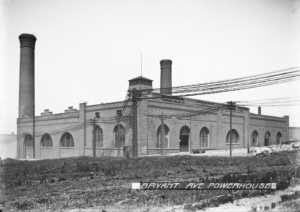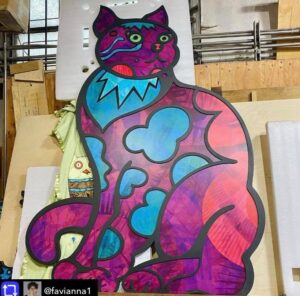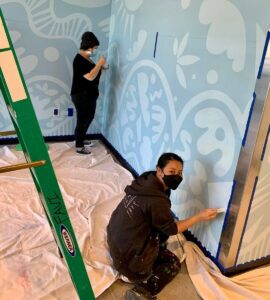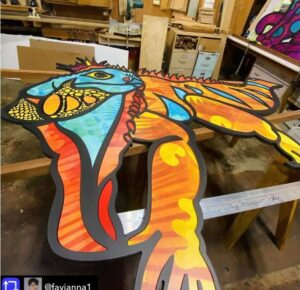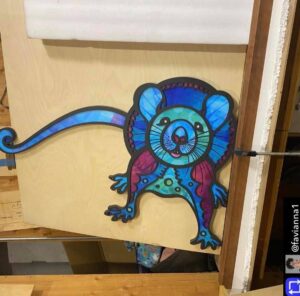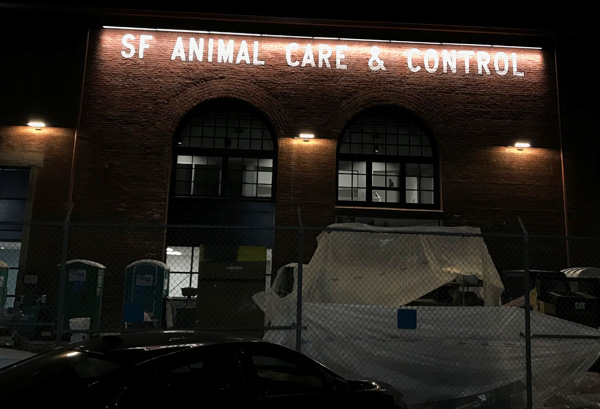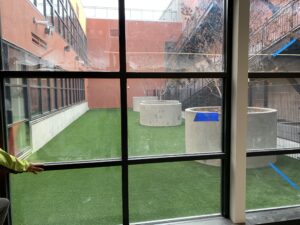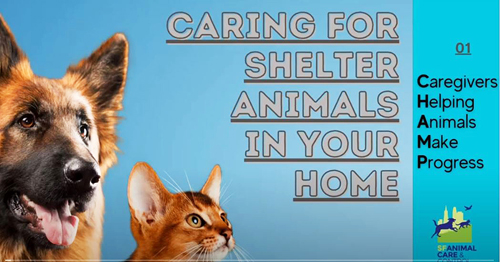By Paula Benton, SFACC Behavior & Training
Teaching a child that she can fall asleep peacefully, alone in her room, is a well-known parenting process. But how do you teach a dog to feel comfortable when left alone?
Many canine welfare industry professionals suspect that as Covid restrictions start to lift and people begin to re-enter the workplace, pet dogs (many of them newly adopted during Covid) may experience separation-related problems. Only time will tell if this will happen. In preparation however, SFACC’s Behavior & Training department offers our top 12 favorite tips for pet owners who currently work from home and may soon need to leave their dog alone, perhaps for the first time in a year.
Separation-related problems for dogs cover a broad spectrum. Some dogs may experience a few minutes of intermittent, frustrated mild barking and then settle down peacefully for a nap. Others may exhibit full-blown medically diagnosed separation anxiety and present more serious panic behaviors, such as self harming, intense pacing, a need to escape to reunite with the owner, home destruction, and digging and chewing beyond natural puppy boredom. Many dogs fall somewhere in between.
Helping your dog feel more comfortable and secure when left alone can be a lot of fun—and not as hard as it sounds! The following simple tips can be used successfully right now in your home. These tips are designed to help prevent separation-related distress or problems. Please note they are not designed to modify existing extreme separation anxiety. If your dog is experiencing serious anxiety and panic, please see your veterinarian immediately and seek the assistance of a certified professional dog trainer.
1. Don’t Delay, Start Today! If you have not left your dog alone in quite some time, today is your day. Please understand that the longer you put off this valuable skill building, the harder it may be for you and your dog to succeed.
2. Have Patience! If you have recently moved or adopted a dog, it is reasonable that he or she will need time to transition to a new routine, home, neighborhood, or family. Mild separation-related problems will likely fade away within a few weeks.
3. Alone Time Is FUN Time! Teaching your dog to associate your departure with something she loves is key. There are many very successful learning tools you can use, such as mouth-watering food puzzles or fun hunt-and-seek games. You can research some of our favorites online, including: Nina Ottosson puzzles, stuffed frozen Kongs, Snuffle Mats, Hide-A-Squirrel plush toys, and interactive tumbler-type treat dispensers. An old stand-by is to sprinkle a generous handful of kibble throughout the room your dog will occupy, right before you leave your home. As she eventually catches on to this simple hide-and-seek game, tuck some kibble pieces in, under, and on top of things in the room to add difficulty. When offered consistently, any and all of these positive associations will have your dog nuzzling you out the door!
4. Ping Pong! Contrary to what you may have heard, take care not to make your departures longer and longer each time. You want to avoid accidently increasing your dog’s frustration or distress with predictably longer sessions. Instead, build in success by ping-ponging the length of time you are gone. For example: Today you might leave for 10 minutes in the afternoon; tomorrow, try 5 minutes in the morning and then 15 minutes in the evening.
5. Sounds Good! Leaving on talk radio or a chatty television channel like HSN or QVC can help mask outdoor sounds your dog may overreact to with excessive barking. White noise machines can also assist in muffling environmental sounds.
6. Eliminate Before You Vacate! Take your dog for a 15- or 30-minute relaxed neighborhood walk before you leave your dog alone. The opportunity to stretch his legs, and wee and pooh will surely add to his comfort. However, take care not to exercise him in high aerobic activities prior to your departure. This can keep his adrenaline higher than you want when he’s alone.
7. This Bed Is Just Right! We all know every dog has her own preferences regarding just about everything. As your dog’s personal “P.I.,” it’s your job to discover her alone-time location preference that provides comfort and security. Be observant. Is your dog most secure in a cozy den-like crate, lying on one of your tee shirts and chewing on a Benebone? Is she most comfortable loose in your living room, secured by baby gates, snoring on the couch? If your dog feels secure alone in your car because she has a 360-degree visual connection to the world, try positioning her near a home window before you leave. Find out what is just right for her.
8. Clear the Decks! In preparation for leaving your dog alone safely in a designated room, put yourself in his paws and scan the environment from his canine point of view. Remove any and all household items that may beckon him to chew, gnaw, or swallow. Taking just a few minutes to do this will avoid hindering his progress and encourage success instead.
9. Say No to No! If you return home to find your dog has had an accident or made a bit of a mess, do not punish your dog. Simply put, he will sense you are intensely unhappy but will not understand why. Punishing him creates confusion and frustration. Instead, while you tidy up, take careful note of the place where you left him. This can be invaluable when you are investigating his alone-time location preference.
10. Be a Good Neighbor! Contact your neighbors and let them know you are working with your dog to help him feel more confident and comfortable when left alone. Make them aware that they might hear some barking or whining, and ask if they will be participants in your training process. Give them your phone number and ask them to contact you directly if they hear excessive barking.
11. Don’t Leave Me This Way! Sometimes leaving our dogs is harder for us than for them. Take this into consideration. Make your departures as normal and easy-going as they would be if you didn’t have a dog. Try to avoid over-fussing, and just ignore your dog 5-10 minutes prior to your departure. The same rings true when re-entering your home. Your goal is to normalize this procedure for you and your dog.
12. I Spy! Ever wonder what your dog does when you are gone? Set up a video camera or mobile phone and record your dog’s behavior after you’ve departed. This will give you an accurate picture of what your dog looks and sounds like when alone, and valuable insight into what’s working for her and what’s not.
Preparing your dog for “life after Covid” by teaching him to rest and sleep confidently when alone is important to his overall health and well-being. Dogs, like young children, need a great deal of rest each day. The average young puppy requires approximately 16-20 hours of sleep in a 24-hour period; the average adult dog requires 12-14 hours. Try each of these 12 simple tips to help your dog have successful, restful time alone. And remember: Start today!
